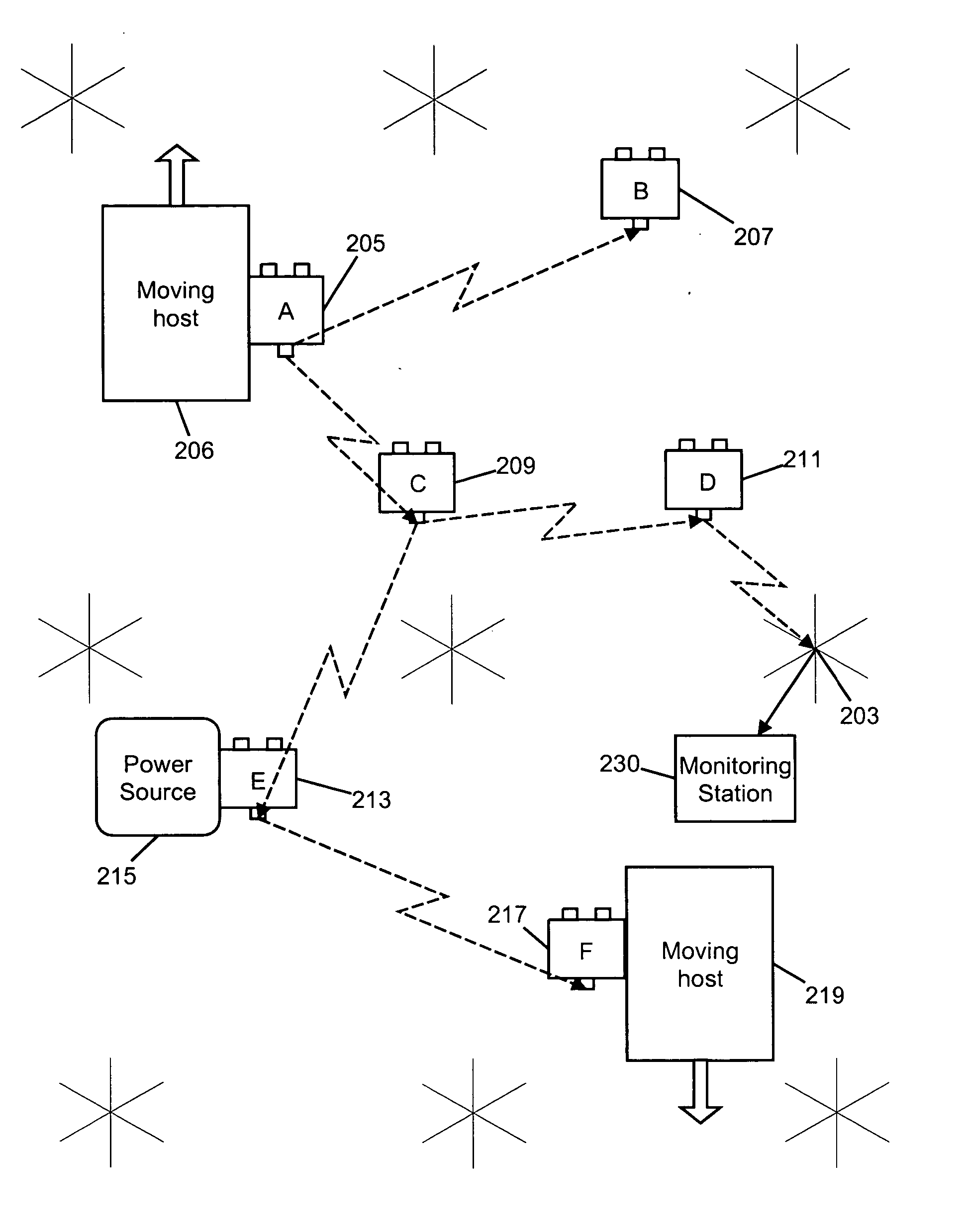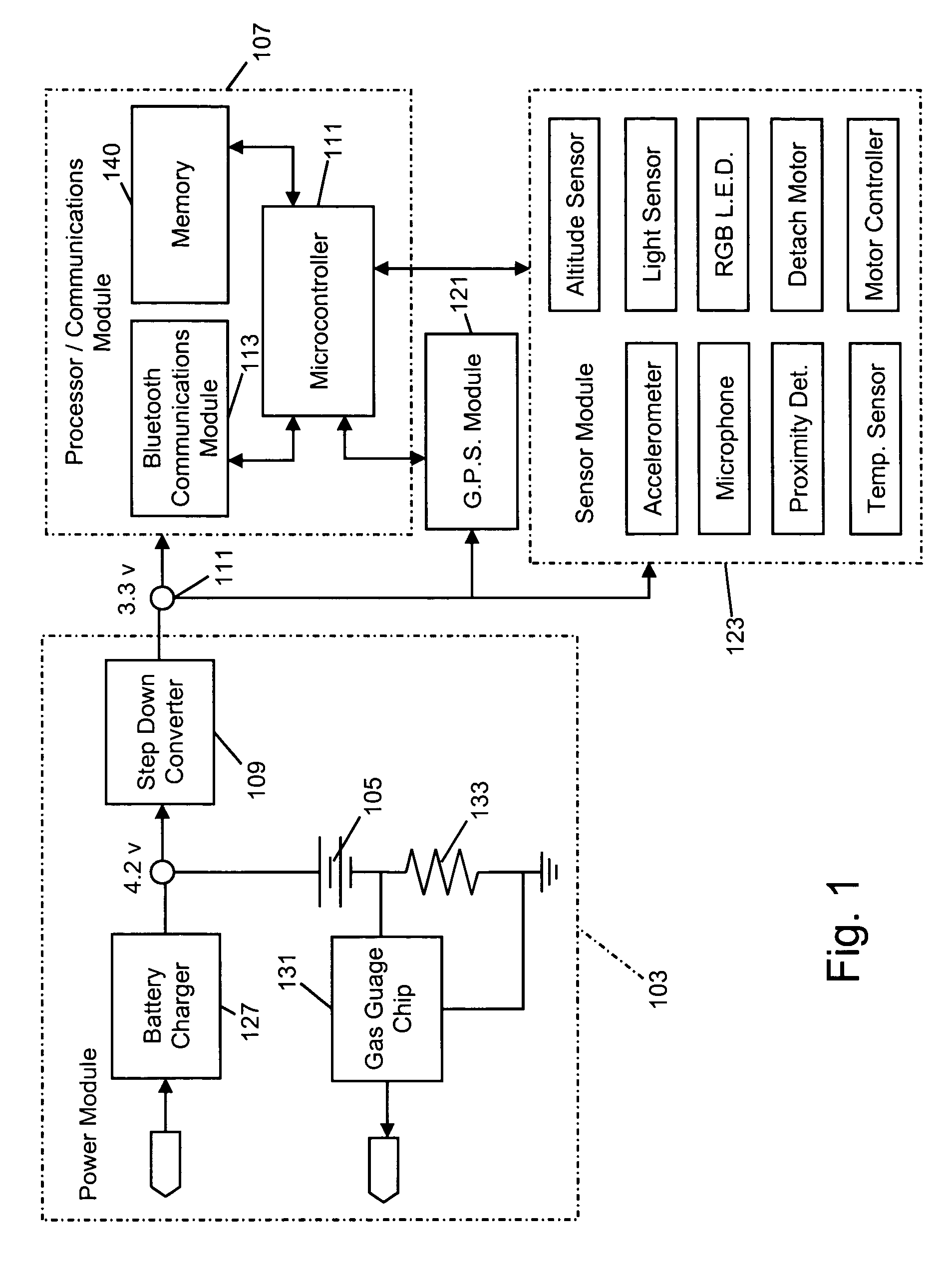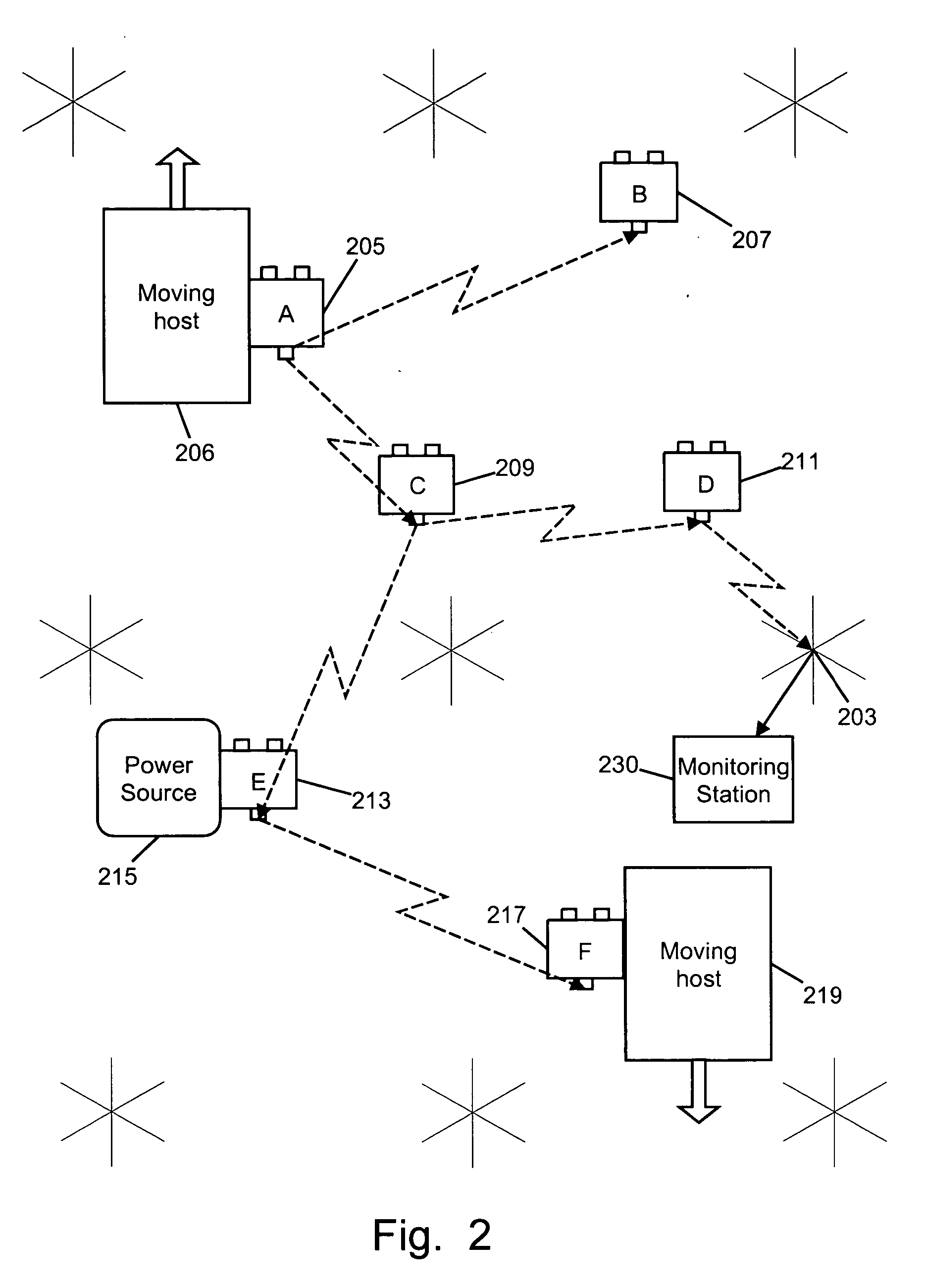Parasitic mobility in dynamically distributed sensor networks
a sensor network and dynamic mobility technology, applied in the field of distributed, wirelessly networked collection of sensors, can solve the problems of locomotion cost, node size and power consumption, and difficulty in manual replacement of batteries or maintaining all nodes
- Summary
- Abstract
- Description
- Claims
- Application Information
AI Technical Summary
Benefits of technology
Problems solved by technology
Method used
Image
Examples
Embodiment Construction
[0057] Overview
[0058] The preferred embodiment of the invention consists of a wireless network of sensing nodes which are carried by moving hosts to desired locations. Each sensing node includes an internal power source, one or more sensors, a wireless communications unit for exchanging information with other nodes, and a supervisory control processor. A block diagram of a single node is seen in FIG. 1, and a network of such nodes is shown in FIG. 2.
[0059] In the description that follows, each sensing node will frequently be referred to as a “paramor,” a name given to a parasitically mobile node (an anagram for PARAsitic MObility Research).
[0060] As seen in FIG. 1, each sensing node in the network contains all the necessary elements for processing, communication, data storage and includes a location system, a suite of sensors, and an onboard rechargeable power source. The power module seen at 103 supplies power to the other components from a rechargeable battery 105. A processing...
PUM
 Login to View More
Login to View More Abstract
Description
Claims
Application Information
 Login to View More
Login to View More - R&D
- Intellectual Property
- Life Sciences
- Materials
- Tech Scout
- Unparalleled Data Quality
- Higher Quality Content
- 60% Fewer Hallucinations
Browse by: Latest US Patents, China's latest patents, Technical Efficacy Thesaurus, Application Domain, Technology Topic, Popular Technical Reports.
© 2025 PatSnap. All rights reserved.Legal|Privacy policy|Modern Slavery Act Transparency Statement|Sitemap|About US| Contact US: help@patsnap.com



